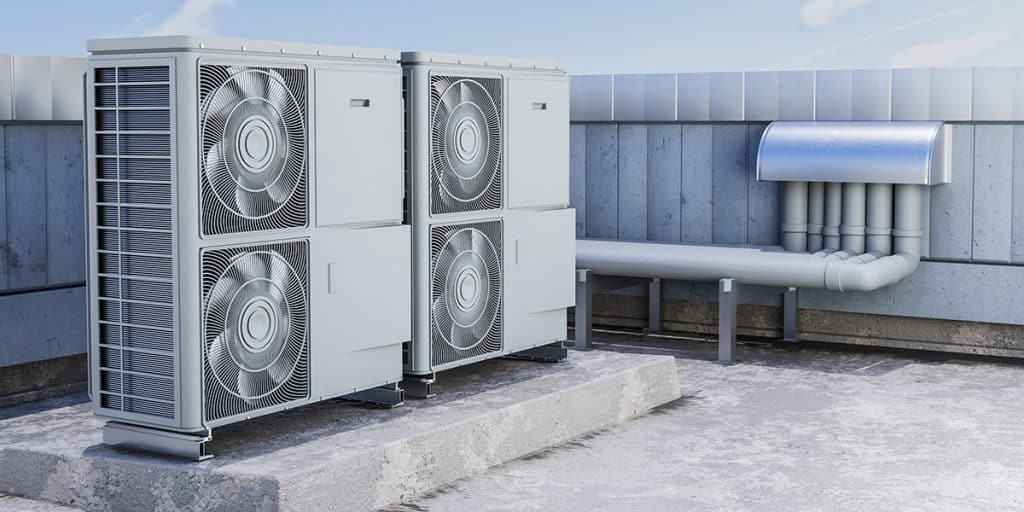It’s imperative to install an appropriately sized HVAC unit to keep your home climate comfortable. People often assume that a bigger system will be more efficient, but that’s inaccurate. Before installing a heating, cooling, and ventilation system, you must know how to size HVAC systems.
When you’re ready to install a new HVAC unit, you can count on our team at Eastern Shore Heating & Cooling to handle the task. As New Jersey’s heating and cooling experts, we know how to size AC units properly to ensure maximum efficiency. Here, we share some tips on how to size HVAC systems.
1. Consider the Importance of HVAC Sizing
Heating, cooling, and ventilation systems are not one-size-fits-all. You must install the appropriate size to ensure that the system effectively cools and heats the home.
An oversized HVAC unit will not keep your home at a comfortable temperature. The system will turn off soon after it turns on, leading to problems with dehumidification and sufficiently cooling or warming the house. However, a too-small unit won’t have enough output, resulting in excessive use and energy consumption.
2. Know Your Home’s Square Footage
The first step in sizing HVAC systems is learning the property’s square footage. Whether you choose the square footage of your home’s new construction or move into an older home, be sure to calculate how many square feet are in the building. Combined with other environmental factors, the square footage will help you determine the ideal air conditioner size.
The formula for determining an HVAC system’s capacity is the building’s square footage times 35. For instance, a 400- to 450-square-foot space will require an air conditioner with a cooling capacity of 14,000 to 15,750 BTUs (British Thermal Units). However, 1,500 to 2,000 square feet need 52,500 to 70,000 BTUs.
3. Use Measurements in Tons for Central AC
You’ll also need to know the required tonnage for your central air conditioning system. Tonnage refers to how much heat a cooling system can remove from a building in one hour. BTU is the measurement of heat, and one ton equals 12,000 BTUs of air per hour.
To calculate a property’s tonnage, multiply the home’s square footage by 30. Then, take that number and divide it by 12,000.
For example, a two-ton HVAC unit can accommodate 1,200 to 1,500 square feet for homes in the north and 1,000 to 1,250 square feet for southern residences. Climate affects a cooling system’s capacity, so tonnage requirements vary by location.
4. Learn Manual J Calculation
Manual J accurately calculates a building’s ideal HVAC unit size by determining how much heating and cooling the building requires. It’s the nationally recognized standard for calculating HVAC sizing loads for houses with an HVAC system and exhaust.
Utilizing Manual J requires extensive details about the house, making it a complex process. However, it is the most accurate way to uncover the necessary HVAC system size to keep the home comfortable year-round without consuming too much energy.
5. Start the Load Calculation Process
Most HVAC professionals use Manual J to help clients size an HVAC unit for a new installation. They consider factors beyond the residence’s square footage, including:
- Number of household members
- Wall insulation type
- Number of windows and their locations
- Placement of lighting
- The site of the new HVAC system
- Number of north- and south-facing windows
- The area’s climate
For example, consider installing a heating and cooling unit in a home with 2,000 square feet of floor space, six-foot ceilings, eight windows, three occupants, and two exterior doors. The formula for the load calculations includes the following:
- 1,000 BTU/h per window
- 100 BTU/h per building occupant
- 1000 extra BTU/h per exterior door
If you put the information together with the details of the home in the example, you’ll see that its ideal HVAC load totals 22,300 BTUs. Here is a closer breakdown of the calculations:
- 6-foot ceilings X 2,000 sq. ft. of floor space = 12,000 BTUs
- 8 windows X 1,000 = 8,000 BTUs
- 3 occupants X 100 = 300 BTUs
- 2 exterior doors X 1,000 = 2,000 BTUs
Request a Free Estimate for HVAC Installation Today
Now that you know how to size HVAC systems, turn to us at Eastern Shore Heating & Cooling to handle your heating and cooling installation needs. As a premier HVAC contractor serving Monmouth, Ocean, and Middlesex counties in New Jersey, our certified technicians service, install, and repair all heating, cooling, and ventilation equipment.
Request a free estimate for HVAC installation in New Jersey using our online contact form or by calling (732) 800-9416.

